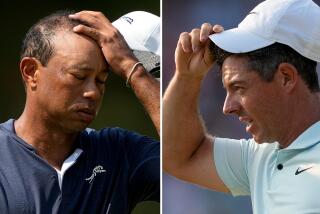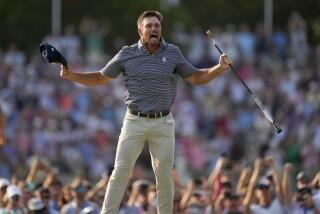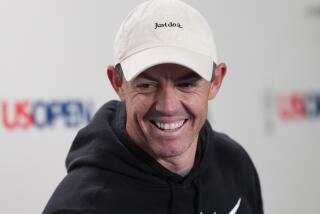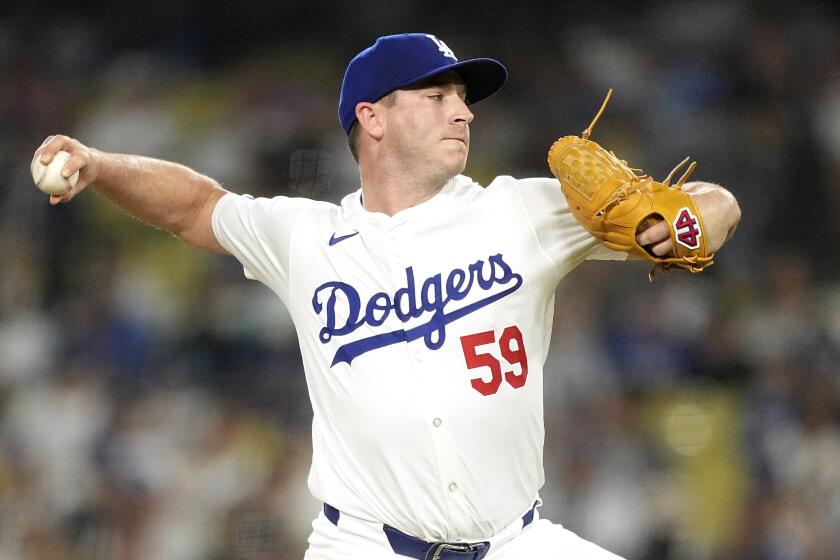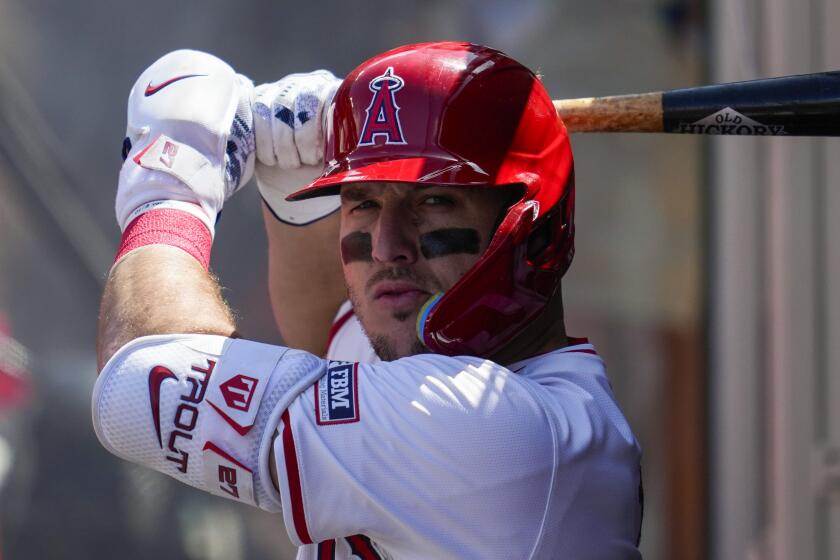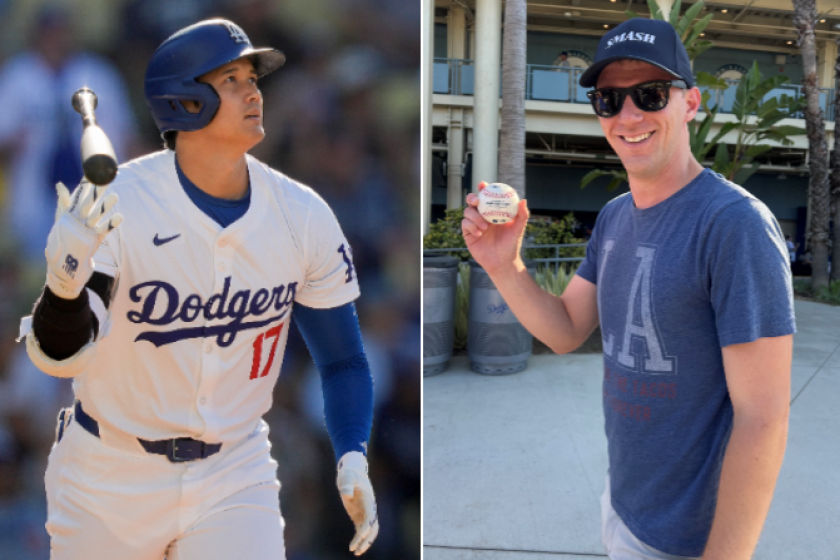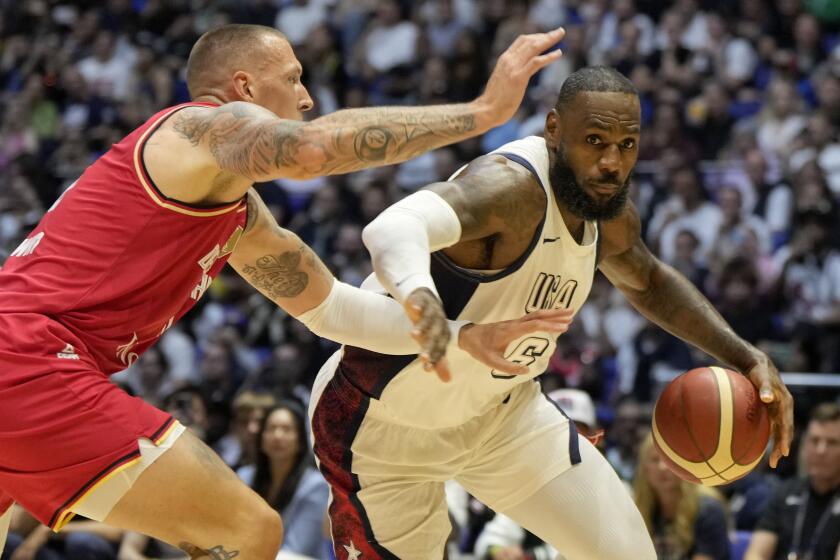Defeats didn’t mean major meltdowns for Greg Norman
In an era of occasional outrageous behavior by athletes we are supposed to admire, we are blessed to still have Greg Norman.
The movie about his life could be titled: “Grace Under Fire.”
Several moments in Norman’s life as a premier pro golfer could easily have resulted in a jersey torn off in disgust and a sulking march to a locker room. He could have bitten somebody’s ear or thrown a chair across a floor.
But it never happened. Norman’s pot never boiled over. No poor-me’s. No curses of the fates.
For starters, there was 1986, when he was at the top of his game and led going into the final round of each of the four majors. He won only one, the British Open, one of his two major titles.
In the ’86 Masters, Norman finished eight under par and had to settle for second place because some senior citizen named Jack Nicklaus came out of nowhere with a 65 and won with nine under. That was a prelude of sorts to the PGA, just four months later, when Bob Tway holed out from the bunker on No. 18 to beat Norman. Or the ’87 Masters eight months after that, when 28-year-old Larry Mize, winner of just one PGA Tour event in six years, chipped in on the second playoff hole to beat Norman.
Two players. Two shots of a lifetime. Two wrenching defeats for Norman
Then there was the ’96 Masters, when he started the last day six shots ahead of Nick Faldo and collapsed so badly that, when Faldo won, he said immediately afterward, “I didn’t know what to say to him. I feel horrible about what happened.”
To which Norman said, “I screwed up. It is all on me.”
His reaction was similar after his most recent best chance for another major, the 2008 British Open, where he took a two-shot lead into the final day, shot a 77 and lost the title to Padraig Harrington.
By then, of course, he was 53, well past his prime and beyond the great expectations put on him in the mid-1980s.
Few in sports have lived through so many public train wrecks and still walk without a limp.
Now, Norman is about to turn 57, and the man with the ever-present shark logo hat and multimillion-dollar businesses built around his Great White Shark brand is in the desert this week to play in the Humana Challenge. That’s the new name for the long-beloved but recently struggling Bob Hope Classic.
Norman doesn’t play much anymore. His businesses — clothing, golf course design, wine sales — take him all over the world. He has had several surgeries in recent years, also keeping him off golf courses. He lives in Florida, but when he does play, he leans toward events in his native Australia.
But recently, he was invited to one in the U.S. and took it more as a mandate than an invitation.
“I got a phone call,” Norman said Wednesday, “and [it was] a phone call I could never say no to.”
The call was from a friend, former President Clinton, whose foundation has partnered with the health-and-wellness insurance company, Humana, to take over and revitalize the Hope.
Not only will the galleries at this first event of the PGA Tour’s 2012 California swing be treated to the likes of Phil Mickelson and Dustin Johnson, they will also get to see a legend in Norman. And with the average age of gallery attendees here, there will be little need to remind people they are watching a player who dominated in world golf between the eras of Jack Nicklaus and Tiger Woods, a player who won two British Opens, 20 PGA Tour events and 70 more on various international tours.
Norman was asked what his expectations were for his game here.
“None,” he said, laughing.
He said his Wednesday practice round at the Palmer Private Course was his second since November and joked about what age does to one’s golf game.
“What your mind tells you and what your body gives you are different things,” he said.
That allowed an easy transition to the question of what Norman’s mind was telling him during all those painful final rounds. How did he manage, time after time, to face the music, face the press, face up to what had just happened?
“My father once told me,” Norman said, “that if somebody asks you a question, you need to answer it truthfully.”
He said that, in the midst of several of his infamous meltdowns, he had discussions with himself about how he would handle the aftermath.
“I never forgot that the game of golf is bigger than anything that could happen to me individually,” he said. “I have never been one to cry over spilled milk. Sometimes, other people just beat me. Other times, I just beat myself. I always looked at that as part of a learning curve, of growing up and finding out how to become a better person.”
He was asked if he ever threw a golf club in a tournament.
“Oh, sure,” he said, laughing. “But never a fling down the fairway, just kind of a toss at my bag.”
And never on a high-profile Sunday afternoon, with cameras bringing everything to every part of the world?
“Never,” he said. “Two seconds of frustration can ruin many years of good example.”
Nearby on a big-screen TV was a highlight film from the Australian Open. It showed an angry player smashing first one, then a second tennis racket on the court.
bill.dwyre@latimes.com
More to Read
Go beyond the scoreboard
Get the latest on L.A.'s teams in the daily Sports Report newsletter.
You may occasionally receive promotional content from the Los Angeles Times.
